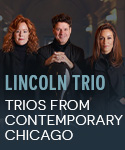Carnegie Hall, New York; February 26, 2008
The well-oiled music-making machine known as the Chicago Symphony Orchestra rolled into Carnegie Hall for its annual New York visit this week, dipping into its color-laden palette to vivid effect under its conductor emeritus, Pierre Boulez. In the second of its two concerts, the orchestra brought works by Luciano Berio, Hector Berlioz and Igor Stravinsky, displaying its penchant for vibrant colors and Boulez’ skill at delineating rhythmic subtleties and revealing masses of details in orchestral textures. Those qualities stood the performers in good stead in the program opener, Quatre dédicacies, four short pieces composed between 1978 and 1989. The first, Fanfare, featured the brassy blips and burps favored by the avant garde of the day but it shared with the others intriguing sonorities and boldly colored orchestral textures. The last piece, Encore, featured syncopated trumpet riffs, swirling dance figures, and hints of jazz to make a positive effect.
Mezzo Soprano Susan Graham joined the orchestra in Berlioz’ Les nuits d’été, which she sang with a marvelous blend of vocal and verbal subtlety. Ms. Graham has a large, hall-filling voice of quality and on this occasion, her vocal climaxes were thrilling, while her pianissimo singing was ravishing. In Sur les lagunes, she introduced a slight beat in the voice to suggest weeping to intensify the word pleure in the text. It’s rare to find so wide a range of positive attributes in performances of this work, but she perfectly delineated the sun-soaked opening Villanelle, the powerful but intimate Absence, and the ghostly despair of Au cimetière. The power of her singing was striking, but the inwardness of her soft singing and the depths of emotion she conveyed were even more impressive. Boulez and the orchestra were willing accomplices here, playing with a similar intimacy, delineating the luscious solo and section spotlights with care, and assuring proper balance between singer and ensemble.
The program closed with Stravinsky’s Petrouchka, the popular ballet made fresh as Boulez brought out numerous details often buried in its dense climaxes. The brilliantly orchestrated crowd scenes that bookend the ballet were done with panache, the haunting scene in the puppet’s cell was suitably atmospheric, and orchestral execution was magnificent, the treacherous trumpet and flute solos, bassoon figurations, and piano arpeggios done flawlessly. The percussion section shone brightly, and the strings also made their mark with the swirling figurations so prominent in the work. Boulez is often criticized for objective interpretations that “X-ray” scores, but while some sections could have been a bit more characterful and others a touch warmer, the brilliance of the interpretation and the playing were irresistible.
Dan Davis































